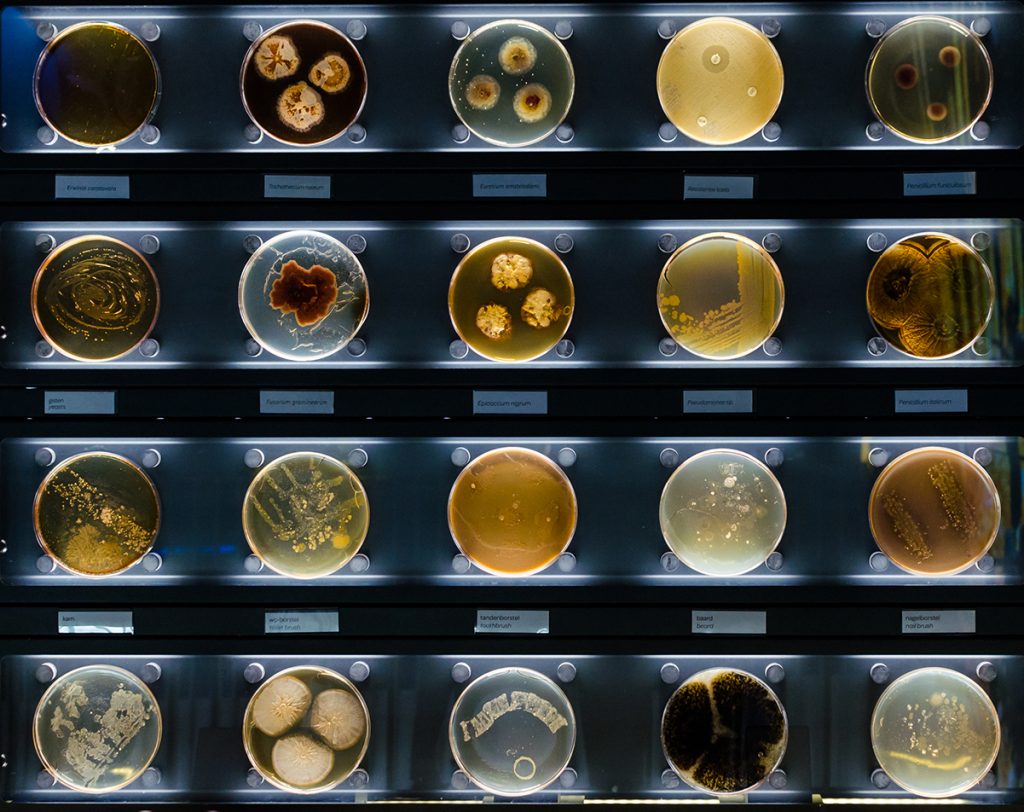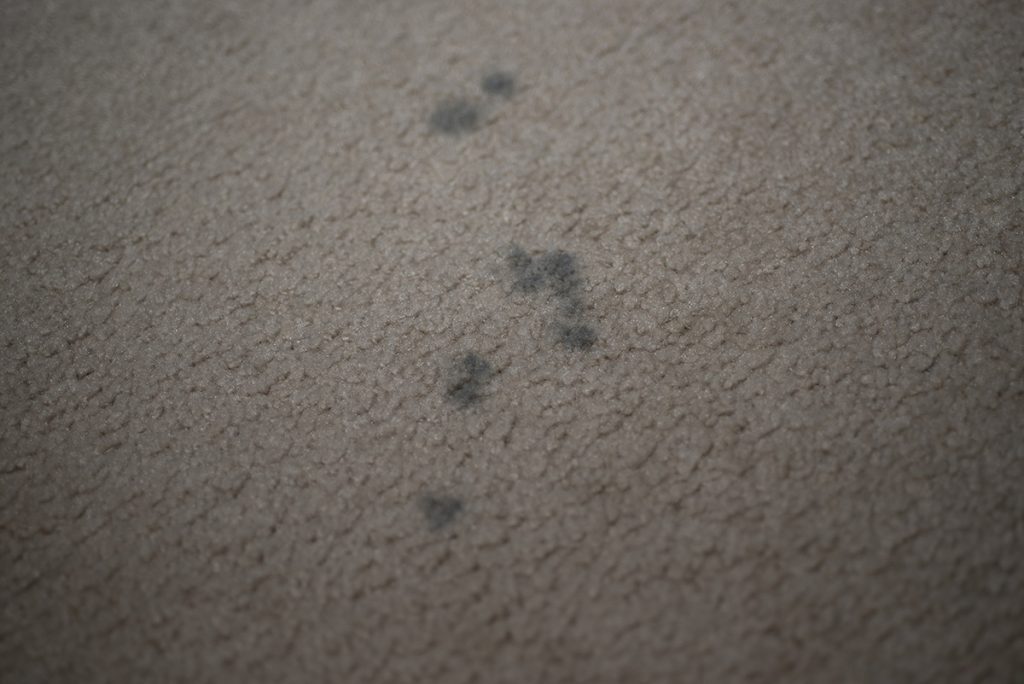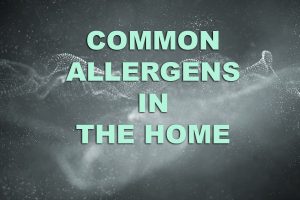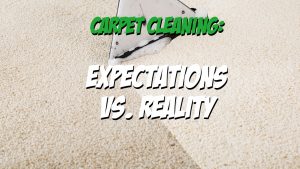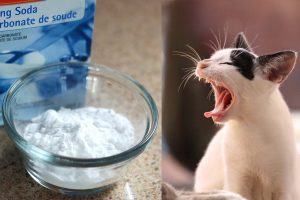How does Mold Affect Your Health
While molds can live both indoors and outdoors, they tend to grow in damp environments. They thrive in temperatures between 65°F and 80°F, especially after the mold spores land on a wet or damp object or area. People are usually exposed to mold when they breathe it in or touch it. Most people are not affected by exposure to ordinary amounts of common molds. But, people with allergies may experience symptoms. Symptoms include stuffy nose, wheezing, coughing or skin rashes.
However, some types of mold can cause serious health problems for anyone. The most common types of mold found indoors include Cladosporium, Alternaria and Penicillium; other species include Aspergillus (which can cause lung problems) and Stachybotrys chartarum (black mold). Not all molds are dangerous; however, black mold has been associated with more serious health issues like nausea and respiratory distress.
Mold is a fungus that releases thousands of tiny spores both indoors and outdoors.
Mold is a fungus that releases thousands of tiny spores both indoors and outdoors. The spores are carried by the wind to many places where they can grow into mold colonies. Mold also grows on food, clothing, paper products and other organic materials. Mold spores are present in air all around us every day. Some molds release toxic substances (mycotoxins) which can make people sick. When spore are inhaled or ingested through food or water contaminated with these toxins, people can get sick.
Molds grow especially well in damp, dark environments.
Molds grow especially well in damp, dark environments with temperatures of 65°F to 80°F. All varieties thrive in temperatures above freezing. Although most molds grow outdoors during the warmer months, they also thrive indoors. They can grow on organic materials such as wood and paper; non-organic materials such as drywall and insulation; food items such as bread or cheese; and even clothing that’s been through a washing machine (or locker room).
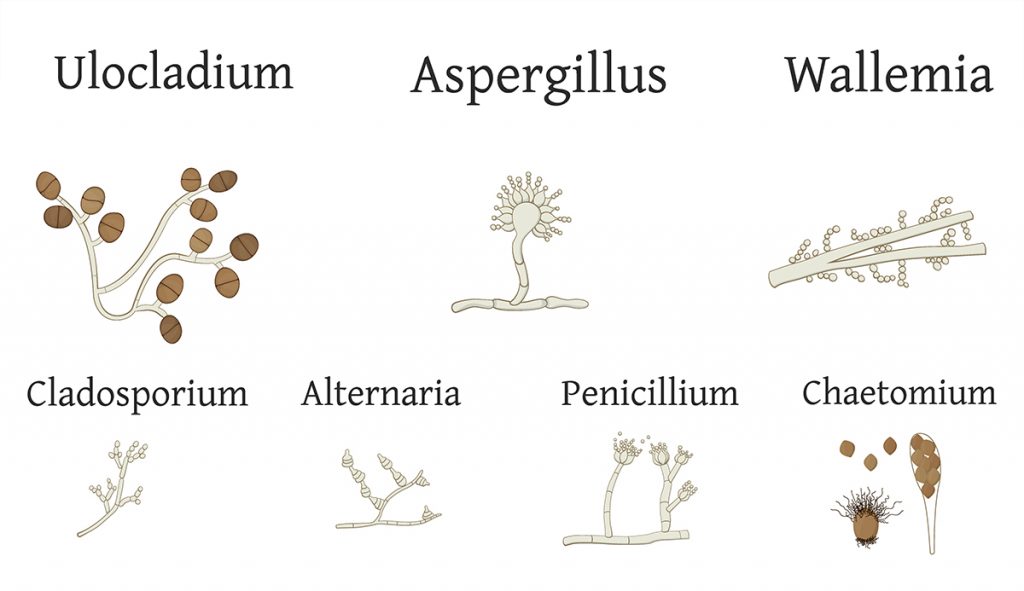
People can be exposed to mold by breathing it in or touching it.
Mold can grow on many surfaces, including walls and floors. It also grows in areas of the home like the bathroom, basement, and kitchen. Inhaling or touching mold causes the body to react with an inflammatory response. This process causes symptoms such as nasal congestion, coughs or wheezing that can last for days after exposure ends.
More than 25 million American adults have asthma.
Asthma itself makes a person more susceptible to developing allergies to mold.
- 1 in 5 American adults have asthma, which is more than 25 million people.
- Asthma itself makes a person more susceptible to developing allergies to mold.
Some people are particularly sensitive to molds.
Many people are exposed to molds in the air, often without knowing it. Mold spores are invisible to the naked eye, but they can grow into colonies that produce allergens or irritants. People with allergies may be more sensitive to molds than others. Exposure can trigger symptoms such as stuffy nose, wheezing, red or itchy eyes or skin, coughing and sneezing.
Mold growth on drywall is not only unpleasant; it also may affect homeowners’ health by causing allergic reactions. Asbestos insulation in older homes may be another source of health problems. Symptoms are a result of breathing asbestos fibers released during remodeling projects. Asbestos removal workers who handle these materials without adequate protective gear may face serious health risks as well
The most common types of mold found in homes are Cladosporium, Alternaria, Penicillium , Aspergillus and Stachybotrys chartarum (black mold).
The most common types of mold found in homes are Cladosporium, Alternaria, Penicillium , Aspergillus and Stachybotrys chartarum (black mold).
Black mold can be dangerous to humans. It is a particular type of fungus that grows on dead organic matter. Black molds produce toxic compounds that cause damage to the lungs and other parts of your body. The best way to prevent exposure is to keep your home dry and ventilated. A DIY fix is an option, but you should call a mold professional to have it assessed.
Not all molds are dangerous; however, black mold and most species of Aspergillus can be very harmful to humans, especially for those with allergic diseases.
What should I do if I have Moldy Carpets in my home?
In the event that you have moldy carpets in your home, here are some steps you can take to remedy the situation:
- If it’s a small amount of mold, you can try cleaning them yourself with vinegar or bleach. Vinegar kills mold and mildew while also removing any odors. However, be sure not to mix bleach and vinegar together because this will create poisonous fumes! If you’re feeling unsure about how much bleach or vinegar is too much, consult a professional before beginning.
- If the carpets are still damp after using vinegar or bleach on them, consider renting a carpet cleaner for an hour or two. Let it do its job overnight removing most of the moisture by morning when it’s time for school/work again. Or, consider taking advantage of services. They provide specialized equipment for getting rid of mold infestations without causing damage. This is especially important if children live there too!
- One final word, mold can be dangerous to you and your family. If you have concerns about your family’s health, test the mold with a mold kit. You can also remove the carpet, or call a carpet cleaning professional to assess the situation.
The best way to get rid of mold is to prevent it from growing. One way is by controlling humidity levels inside. In addition, use exhaust fans whenever cooking or showering, and vent clothes dryers outside.
Now that you know how mold affects your health, we hope you’re better equipped to keep it out of your home. Although there are many types of mold, and not all molds are harmful. The most important thing is to make sure that humidity stays low and the area stays ventilated. If you notice mold growing in your home, contact a professional for help.

